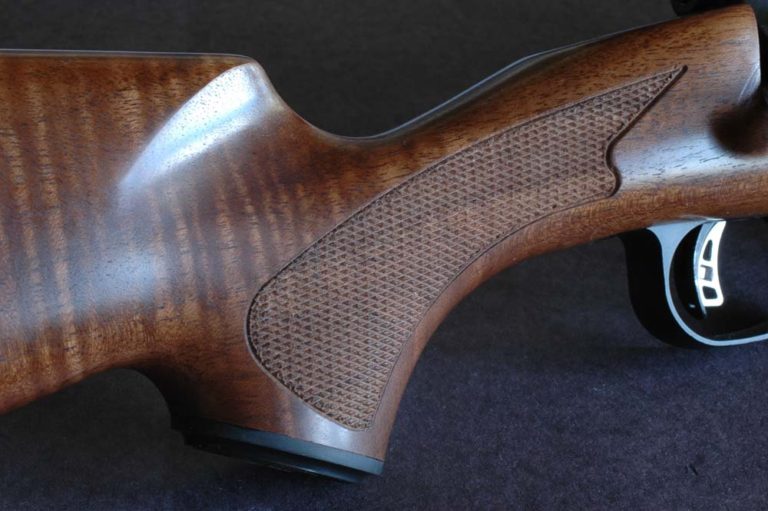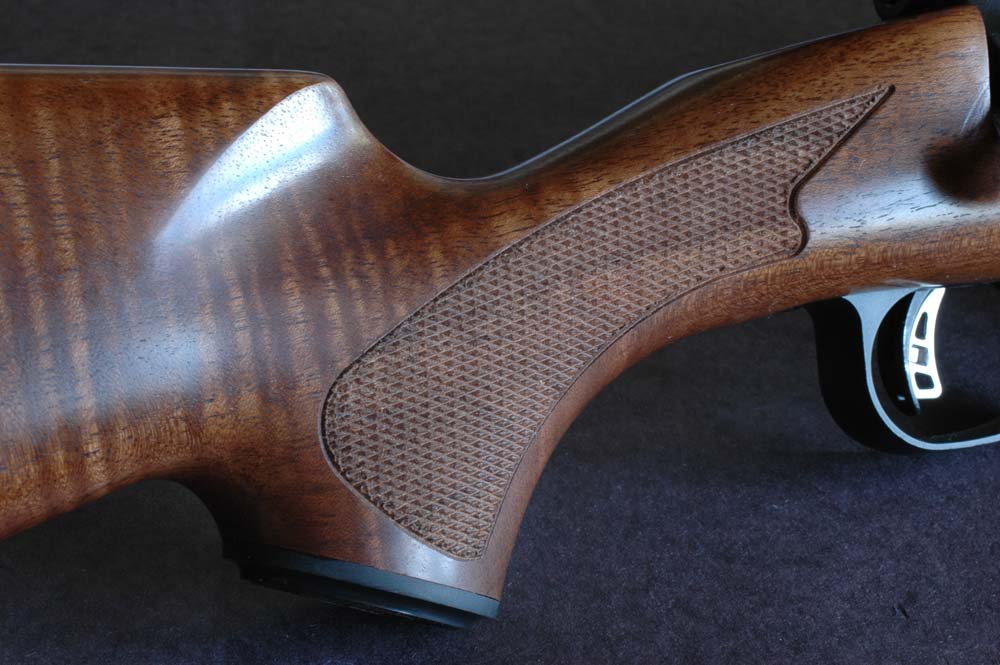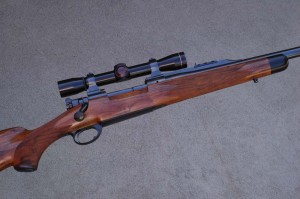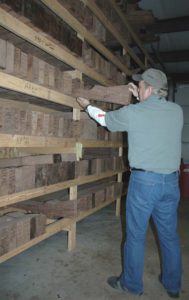

Rifle stocks made out of walnut look and perform like nothing else. Here's a look from Wayne van Zwoll at the materials that go into walnut custom rifle stocks.
When I was a lad, you could buy a fancy American walnut stock blank for $25. I paid $7.50 for the plain but semi-inletted blank that went on my first deer rifle. Now even American walnut has become costly.
Black polymer is taking over. The problem with walnut is that you can’t manufacture it. You have to grow it, and growing walnut takes a lot longer than growing tomatoes. We’re inletting wood from trees that may have been around before rubber tires, before metallic cartridges, even before the Declaration of Independence. Don’t figure on cutting gunstocks from trees you’re planting now.

In a cruel twist of circumstance, the people who discovered walnut had no guns to put it on. That was back in the 13th century, when Marco Polo allegedly brought walnuts from their native Persia to Italy.
Nuts and seedlings eventually found their way to England, then to France and other parts of Europe. The scientific name for the species is Juglans regia, or “royal walnut.” Common names denote location, not genetic differences. English walnut is J. regia; so is French. The tree eventually wound up in California, to be adopted as “California English.”
Typically, California English wood grown from nuts has a tawny background with black streaking and less “marblecake” than England’s walnut. Classic French is often red or orange. Circassian walnut – named after a region on the Black sea – seems to run heavy to black.
“These days the best regia walnut comes from Turkey and Morocco,” the late Don Allen told me before his untimely death. Don knew a great deal about walnut. He searched the world over for gunstock blanks to use at his Dakota Arms Company. Those rifles still wear gorgeous walnut.
Claro walnut, J. hindsii, was discovered around 1840, in California. Decidedly red, and with more open grain than English walnut, Claro was crossed with English to produce Bastogne. Nuts from this tree are infertile, but fast growth and dense grain makes Bastogne a favorite of stockmakers. It checkers more cleanly than Claro and withstands heavy recoil.
Sadly, this walnut is in short supply and diminishing fast under unrelenting demand. As with J. regia, the best Bastogne comes from trees at least 150 years old.

American or black walnut, J. nigra, has been the mainstay of our firearms industry since the first “Kentucky” rifles were forged in Pennsylvania. Typically, it’s an open-pored wood, warm brown in color, with just enough black to justify the name. It can be as plain as a power pole or richly patterned.
Quarter-sawn walnut has the “striping” common to many gunstocks; the saw runs across growth rings. Plane-sawed walnut shows wide color bands because the saw runs tangent to growth rings. Either cut can yield a sturdy, handsome stock, but quarter-sawn walnut is most in demand.

Walnut must be dried before it is worked. But if the water leaves too fast, the wood surface can crack and check and eventually crust, inhibiting movement of “bound” water from the core. Structural harm may result. A kiln helps throttle the release of free water.
According to Don Allen, drying damage occurs most often in the first weeks after cutting. Moisture content will then stabilize at about 20 percent, after which time the blank can be air-dried or kiln-dried without damage. When the stock no longer loses weight, it’s dry enough to work. Stockmakers may turn the blank to profile then – and let it dry another six months before inletting.
Proper layout imparts strength to a rifle-stock. The grain on a quarter-sawn walnut blank should run roughly parallel with the top of the grip, when viewed from the side. The grip will then best withstand recoil, and the forend won’t easily bend. Seen from the top, forend grain should parallel the bore.
Figure in the buttstock won’t affect accuracy, but knots and crotches that produce interesting patterns up front can twist the forend. Though wood can shift with changes in moisture, modern finishes can make it almost impervious. Both wood and polymer stocks react to changes in temperature.
* Click to see a photo gallery of custom rifles sporting incredible stocks.

Next Step: Get your FREE Printable Target Pack
Enhance your shooting precision with our 62 MOA Targets, perfect for rifles and handguns. Crafted in collaboration with Storm Tactical for accuracy and versatility.
Subscribe to the Gun Digest email newsletter and get your downloadable target pack sent straight to your inbox. Stay updated with the latest firearms info in the industry.

![Best Concealed Carry Guns In 2024 [Field Tested] Wilson Combat EDC X9S 1](https://gundigest.com/wp-content/uploads/Wilson-Combat-EDC-X9S-1-324x160.jpg)




